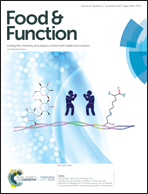Effects of a Ganoderma atrum polysaccharide against pancreatic damage in streptozotocin-induced diabetic mice
Abstract
This study aimed at exploring the role of a Ganoderma atrum polysaccharide (PSG-1) in pancreatic damage in streptozotocin (STZ)-induced type 1 diabetes mellitus (T1DM) mice. The results suggested that blood glucose was significantly increased in the STZ group in comparison with the control group. After 4 weeks of treatment with PSG-1 or metformin (MET), blood glucose levels in the PSG-1 and MET groups were apparently lower than in the STZ group, indicating that PSG-1 triggered hypoglycemic effects in vivo. Moreover, experiments demonstrated that PSG-1 markedly decreased apoptosis of islet cells by inhibiting the mitochondrial apoptotic pathway and activating the PI3K/Akt survival pathway. PSG-1 also exerted anti-inflammatory effects, as evidenced by the dramatically decreased levels of IL-1β, TNF-α and INF-γ and restraint of the TLR4-dependent NF-κB signal pathway. Meanwhile, PSG-1 maintained homeostasis of redox systems by increasing the activities of anti-oxidant enzymes and decreasing the amount of malondialdehyde in the pancreas. Together, these data provide evidence that PSG-1 can be employed as an alternative dietary supplement to ameliorate T1DM.



 Please wait while we load your content...
Please wait while we load your content...